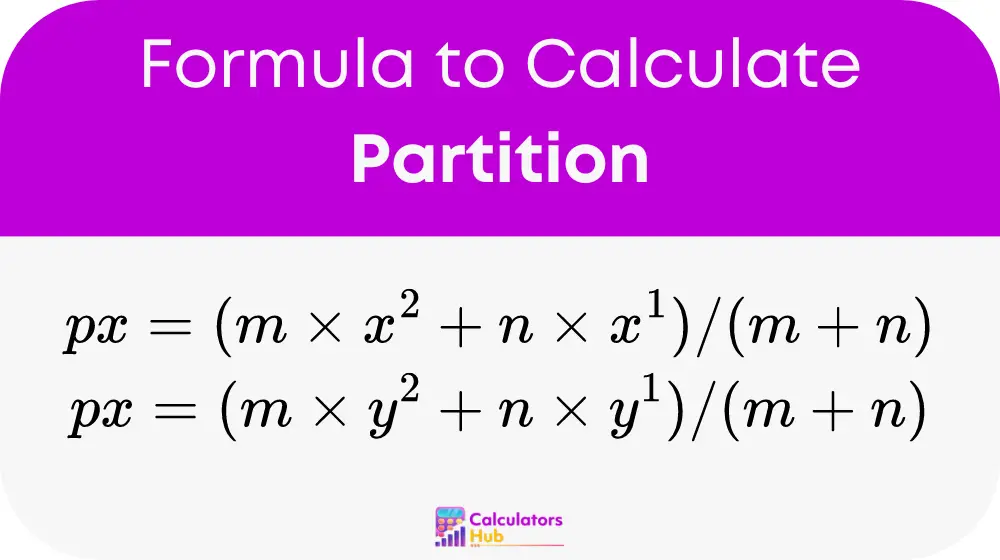The Partition Formula Calculator is an essential tool for students, engineers, and professionals who require precise measurements within line segments. It calculates the coordinates of a point that will partition a line segment (defined by two endpoints) into a ratio of two segments, maintaining exact proportions dictated by the user.
Formula of Partition Formula Calculator
Internal Partition
Internal partition refers to the division of a line segment defined by its endpoints A and B, where A = (x1, y1) and B = (x2, y2). To find a point P = (px, py) that divides the line segment AB in the ratio m:n, where m and n are positive integers, the formulas are:

Table of Common Terms
To aid in common calculations, here’s a handy reference table:
| Ratio (m:n) | Point P(px, py) using A(1,2) & B(3,4) |
|---|---|
| 1:1 | (2, 3) |
| 1:2 | (1.67, 2.67) |
| 2:1 | (2.33, 3.33) |
| 1:3 | (1.5, 2.5) |
| 3:1 | (2.5, 3.5) |
Example of Partition Formula Calculator
Consider you need to find the point that divides the line segment connecting A(1, 2) and B(3, 4) in the ratio 2:1. Using the formula:
px = (2 * 3 + 1 * 1) / (2 + 1) = 7 / 3 ≈ 2.33
py = (2 * 4 + 1 * 2) / (2 + 1) = 10 / 3 ≈ 3.33
Thus, the partition point P is approximately (2.33, 3.33).
Most Common FAQs
A partition point is a specific point on a line segment that divides the segment into two parts, each in a specified ratio to the other.
To use this calculator, input the coordinates of endpoints A and B, and the desired ratio (m:n). The calculator will output the coordinates of the partition point P.
The calculator assumes straight lines and uses standard coordinate geometry calculations, which may not account for real-world factors like irregularities in the terrain or measurement errors.